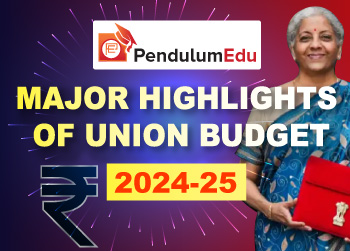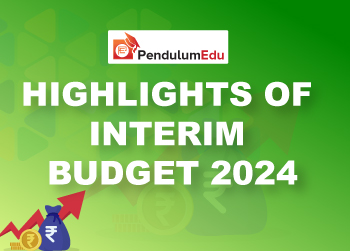Topic: Appointments
1. Asheesh Pandey becomes Executive Director of Bank of Maharashtra (BoM).
- Asheesh Pandey became Executive Director of Bank of Maharashtra (BoM) on 31 December 2021.
- He was earlier working as Chief General Manager & Chief Operations Officer (COO) at Union Bank of India. He started his banking career with Corporation Bank.
- Bank of Maharashtra is headquartered in Pune. Its CEO is A. S. Rajeev. It is a nationalized bank.
Topic: Banking System
2. West End Housing Finance makes a formal request for SFB licence.
- As per RBI, West End Housing Finance Limited has made a formal request for Small Finance Bank (SFB) licence.
- RBI has said that it received an application under the guidelines for 'on tap' Licensing of Small Finance Banks dated December 5, 2019 from West End Housing Finance Limited.
- West End Housing Finance Limited was started by Late PD Gupta, Late MN Goiporia and Pankaj Gupta. Pankaj Gupta is currently its vice-chairman.
- The guidelines for 'on tap' Licensing of Small Finance Banks were released on December 5, 2019.
- The minimum paid-up voting capital/net worth for Small Finance Banks (SFBs) should be Rs 200 crore.
- For urban cooperative banks voluntarily changing into Small Finance Banks (SFBs), the initial requirement of net worth is Rs 100 crore. This has to be increased to Rs 200 crore in five years.
Topic: Banking System
3. Axis bank becomes second largest merchant acquiring bank in India.
- Axis bank has become the second-largest merchant acquiring bank in India.
- The bank installed more than two lakh card-swipe machines and achieved the position.
- This is part of the bank’s ‘Axis One’ strategy in which it approaches customers offering its entire gamut of products in place of standalone service.
- Axis bank’s market share in the number of devices has increased from 15% in January 2021 to 16% in October 2021.
- HDFC Bank dominates merchant-acquiring space followed by Axis Bank. Axis Bank has overtaken the State Bank of India and ICICI Bank.
- Axis Bank:
- It is the third-largest private bank in India that is headquartered in Mumbai.
- It was formerly known as UTI Bank. Amitabh Chaudhry is its MD and CEO.
Topic: Indian Economy/Financial Market
4. Eight core industries output for November 2021 grew at 3.1%.
- Eight core industries output for November 2021 has grown at 3.1%.
- In November 2020, a contraction of 1.1% was recorded. In October 2021, eight core industries' output grew at 8.1%.
- In November 2021, six of the eight core sectors have shown a slowdown in output growth.
- These six sectors are coal, natural gas, refinery products, fertilisers, steel and electricity.
- The other two sectors (crude oil and cement) have shown contraction on year-on-year basis.
- During April-November 2021, core industries' output grew 13.7% against a contraction of 11.1% in the same period last year.
Topic: Indian Economy/Financial Market
5. India's current account fell into deficit in the second quarter, with the CAD now standing at 1.3 percent of GDP.
- According to the Reserve Bank, India's current account slipped into a deficit of USD 9.6 billion, or 1.3 percent of GDP, in the September quarter.
- Both the quarter-ago and year-ago periods had a surplus in the current account, which recorded the value of exports and imports of both goods and services, as well as international capital transfers.
- In the April-June 2021 quarter, India's current account surplus was USD 6.6 billion, or 0.9 percent of GDP, compared to USD 15.3 billion, or 2.4 percent of GDP, in the year-ago period (Q2FY22), according to the data.
- RBI said that for the first half of the financial year, India recorded a current account deficit of 0.2 percent of GDP, as against a surplus of 3 percent in the year-ago period, due to a sharp increase in the trade deficit.
- In the quarter under review, the deficit widened mainly to US$44.4 billion from US$30.7 billion in the previous quarter and increased net expenditure from investment income.
- On the basis of the strong performance of computer exports and business services, net service receipts decreased marginally in the previous quarter but grew year over year.
- Private transfer revenues, which primarily represent remittances from Indians working abroad, increased by 3.7 percent year on year to USD 21.1 billion.
- During the quarter, net foreign direct investment (FDI) inflows totaled USD 9.5 billion, down from USD 24.4 billion a year ago. FDI inflows for the first half of the fiscal year totaled USD 21.2 billion, down from USD 23.9 billion the previous year.
- In the September quarter, net foreign portfolio investment was USD 3.9 billion, down from USD 7 billion the year before. Portfolio investment recorded a net inflow of USD 4.3 billion in the first half of the fiscal year, which was down from USD 7.6 billion a year ago.
- External commercial borrowings recorded a net inflow of USD 4.1 billion in the quarter, compared to an outflow of USD 3.7 billion the year ago.
- Non-resident deposits recorded a net outflow of USD 0.8 billion, compared to an inflow of USD 1.9 billion the previous year.
- Foreign exchange reserves on a BoP basis increased by USD 31.2 billion, which included the special drawing rights allocation of USD 17.86 billion by the International Monetary Fund on 23 August.
Topic: Indian Economy/Financial Market
6. Fiscal deficit for April-November 2021 reported at 46% of Budget Estimate.
- Union government has reported a fiscal deficit for April-November 2021 at 46% of the Budget Estimate.
- This is lower than over 135% fiscal deficit recorded during corresponding period of last fiscal.
- Fiscal deficit for April-November period is the lowest in 24 years as a percentage of Budget Estimate.
- According to Chief Economist with India Ratings & Research (Ind-Ra), overall deficit is estimated to be 20 basis points lower than Budget target of 6.8%.
- However, according to Aditi Nayar, Chief Economist with ICRA, overall fiscal deficit is expected to be around ₹16.5-17-lakh crore against Budget Estimate (BE) of over ₹15-lakh crore.
- According to data by the Controller General of Accounts (CGA), the tax collections had reached 73.5% of BE in the eight-month period. Non-tax revenue had reached around 92%.
- NOTE:
- Tax and non-tax revenues: Revenue receipts of the government are divided into tax and non-tax revenues.
- Tax revenues are further divided into direct taxes (personal income tax, corporation tax) and indirect taxes (excise taxes, customs duties).
- The components of non-tax revenues of central government are given next.
- Interest receipts as well as dividends and profits of government
- Fees and other receipts for services provided by the government
- Cash grants-in-aid from international organisations and foreign countries
Topic: Taxation
7. GST collection in December stood at ₹1.29-lakh crore.
- Goods and Services Tax (GST) collection in December stood at ₹1.29-lakh crore and this is the lowest in three months.
- The average monthly gross GST collection for the third quarter of 2021-22 was ₹1.30-lakh crore. This was higher than the first two quarters of 2021-22.
- According to Finance Ministry, revenues for December 2021 are 13% higher than in December 2020 and 26% higher than in December 2019.
- The number of e-way bills generated has declined from 7.4 crore in October to 6.1 crore in November.
- According to Finance Ministry, the main contributing factors to robust GST collection are economic recovery and anti–evasion action.
Topic: Miscellaneous
8. Ministry of Environment notifies norms for fly ash utilization by coal-fired power plants.
- Ministry of Environment, Forest and Climate Change has notified norms for fly ash utilization by coal-fired power plants.
- As per the notification, all coal and lignite-based Thermal Power Plants (TPPs) are required to utilize 100% fly ash in an environmentally friendly manner for making construction sector products.
- In case plants fail to achieve these targets, government can impose a penalty of ₹1,000 per tonne of fly ash. Government has introduced fines for the first time.
- TPPs should achieve 100 % fly ash utilization in three years. Utilization levels for TPPs should not decline below 80%.
- Government will form a committee for monitoring fly ash utilization. The committee will be headed by Chairman of Central Pollution Control Board (CPCB).
- CPCB-authorized auditors will conduct compliance audits for ash disposal by the TPPs and their user agencies.
- The audit report will be submitted to CPCB and the concerned State Pollution Control Board by November 30 every year.
- Action will be taken against non-compliant TPPs within 15 days of receiving the report.
 Previous
Previous 
 Latest
Latest 








Comments